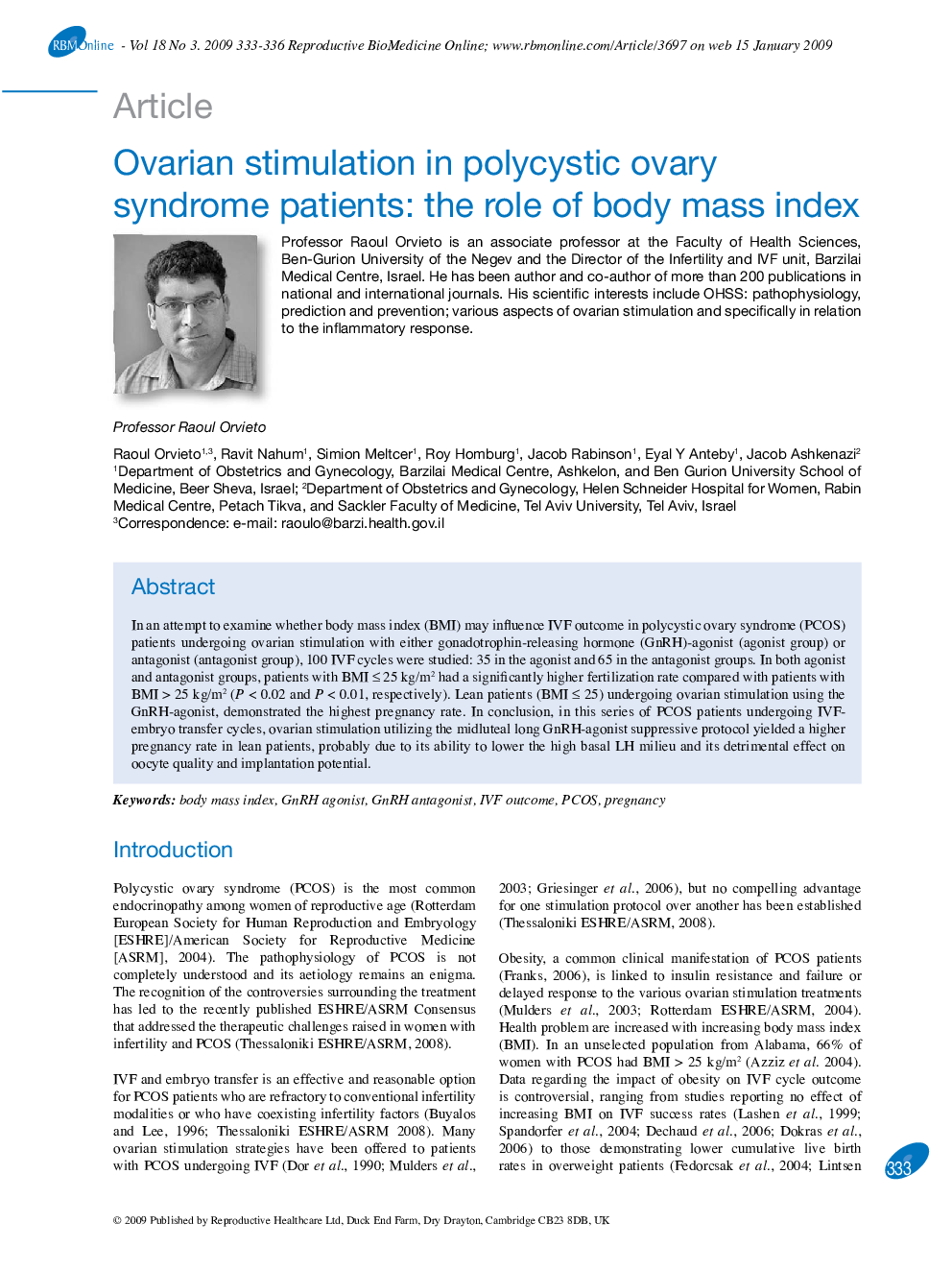| کد مقاله | کد نشریه | سال انتشار | مقاله انگلیسی | نسخه تمام متن |
|---|---|---|---|---|
| 3972017 | 1256790 | 2009 | 4 صفحه PDF | دانلود رایگان |

In an attempt to examine whether body mass index (BMI) may influence IVF outcome in polycystic ovary syndrome (PCOS) patients undergoing ovarian stimulation with either gonadotrophin-releasing hormone (GnRH)-agonist (agonist group) or antagonist (antagonist group), 100 IVF cycles were studied: 35 in the agonist and 65 in the antagonist groups. In both agonist and antagonist groups, patients with BMI ≤ 25 kg/m2 had a significantly higher fertilization rate compared with patients with BMI > 25 kg/m2 (P < 0.02 and P < 0.01, respectively). Lean patients (BMI ≤ 25) undergoing ovarian stimulation using the GnRH-agonist, demonstrated the highest pregnancy rate. In conclusion, in this series of PCOS patients undergoing IVF-embryo transfer cycles, ovarian stimulation utilizing the midluteal long GnRH-agonist suppressive protocol yielded a higher pregnancy rate in lean patients, probably due to its ability to lower the high basal LH milieu and its detrimental effect on oocyte quality and implantation potential.
Journal: Reproductive BioMedicine Online - Volume 18, Issue 3, 2009, Pages 333-336